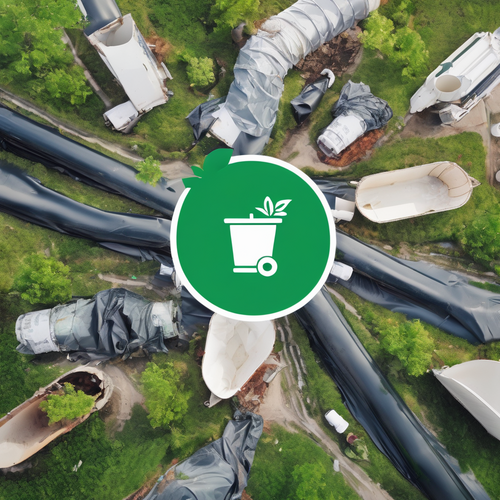Sanitation in Waste Management: A Deep Dive into Practices and Impact
Imagine living in a world where waste is treated not as an inconvenience but as an opportunity—an opportunity to reclaim, recycle, and rejuvenate our planet. Yet, here we are: cities bustling with life, yet teetering on the edge of an environmental abyss fueled by mismanaged waste. The irony is palpable; we generate waste with the ferocity of a thousand storms without caring how it swirls around us like a toxic mist. 🌪️
Sanitation acts as the unsung hero in the realm of waste management, a diligent steward working tirelessly behind the scenes. Its practices form the backbone of effective waste disposal systems, ensuring that what we discard today does not haunt us tomorrow.
The Delicate Dance: What is Sanitation in Waste Management?
At its core, sanitation involves a spectrum of practices aimed at maintaining public health by managing waste effectively. This includes cleansing, recycling, and transporting waste, all with the primary goal of reducing health hazards and environmental risks. It’s a bit like hosting a party where you invite friends but fail to clean up afterward; eventually, chaos ensues!
“Sanitation is a currency, a priceless one that pays dividends in health, dignity, and the environment,” asserts Dr. Sarah Finkelstein, an expert in environmental health. Her words reverberate through the corridors of waste management, highlighting sanitation’s value not just in terms of cleanliness, but in preserving the sanctity of human life and the earth itself.
How We Achieve Sanitation in Waste Management
Achieving sanitation in waste management is akin to conducting a symphony: it requires various instruments—education, technology, and community engagement—to harmonize. Here’s how we can orchestrate this complex arrangement effectively:
- Education and Public Awareness: Engaging communities through educational programs is vital. A well-informed public is less likely to treat waste like an ugly stepchild, discarding it carelessly. Instead, they learn the nuances of recycling, composting, and minimizing waste. It’s like teaching children to cherish books—they learn to appreciate their value and take care of them.
- Efficient Waste Collection Systems: Just as a meticulously brewed coffee can only be enjoyed when served hot, an efficient waste collection system ensures that waste is gathered before it turns into a breeding ground for disease. Regular and well-structured collection schedules reduce the chances of waste overflowing into streets, creating unsightly (and unhealthy) messes. ☕
- Innovative Disposal Technologies: From anaerobic digestion that converts organic waste into renewable energy to advanced sorting technologies that get the most out of recyclable materials, innovation lies at the heart of modern sanitation. These technologies enable us to turn what was once deemed worthless into resources, creating a circular economy** that continuously gives back to the environment. ♻️
- Composting and Recycling Programs: Often viewed as an afterthought, composting can turn organic waste into ‘black gold’—nutrient-rich soil for gardens and farms. Similarly, recycling not only conserves natural resources but reduces the need for landfills. Both practices allow us to shift the paradigm, turning waste into wealth rather than burden. 🌿
The Ripple Effect: Impact Beyond Sanitation
The cascading benefits of effective sanitation reach far beyond the immediacy of waste management:
- Public Health Improvement: With better waste management, the incidence of diseases related to improper sanitation, such as cholera and dysentery, sees a steep decline. It’s almost poetic how a cleaner environment leads to a healthier population.
- Environmental Conservation: Proper sanitation reduces landfill overflow, curtails pollution, and conserves wildlife habitats. In essence, every effort made in waste management reverberates through ecosystems, ensuring the balance of nature remains unshaken.
- Economic Advantages: Cleaner communities attract businesses, improve property values, and reduce public health costs, showcasing sanitation not just as a necessity, but also as an economic booster. It’s a win-win that benefits both community and commerce.
Facing the Challenges Ahead
Despite these strides, challenges lurk like shadows waiting to pounce on the unprepared. Urbanization, population growth, and climate change complicate sanitation efforts and stretch resources thin. The irony is striking: as more people crowd into cities—often hailed as hubs of progress—their waste becomes more pronounced and difficult to manage. It’s a twisted paradox of modernity that calls for innovative solutions.
To navigate these murky waters, continued efforts toward advocacy, technological investments, and community involvement are essential. By fostering a sense of stewardship among individuals and governments alike, we can climb the steep hill toward a sustainable future.
Just as a butterfly flaps its wings, setting off changes across the globe, our commitment to sanitation can initiate profound transformations. The world of waste management, although often neglected, offers limitless potential for creativity and responsibility. After all, waste might be what we discard, but sanitation can be a bridge to a cleaner, healthier, and ultimately, a better tomorrow. 🌍
